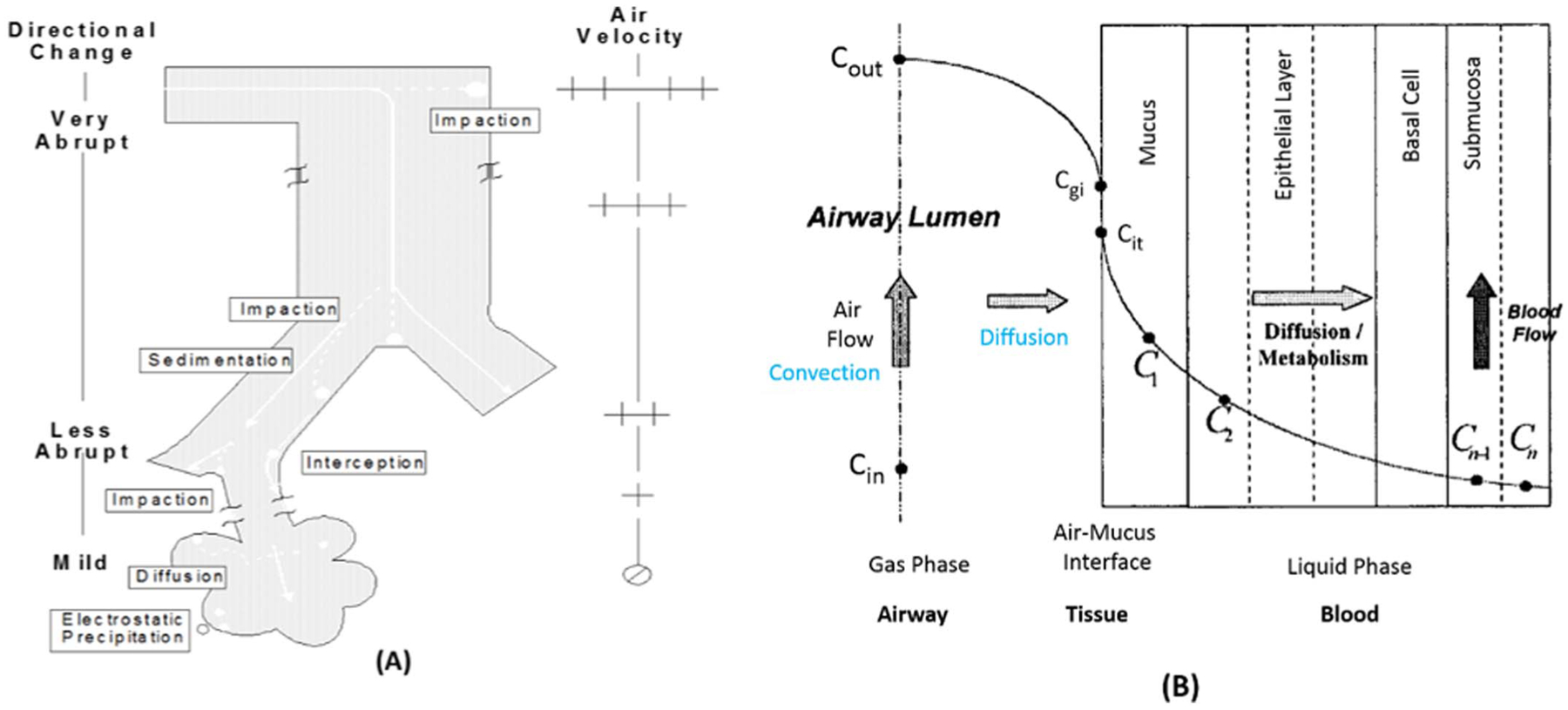Fig. 4.

Selected anatomical or physiological parameters and mechanisms of inhaled particle deposition (a) and gas uptake (b) in the respiratory tract. Particle clearance is not illustrated. Directional change and air velocity refer to airflow direction and rate, respectively, as it travels through the respiratory tract. As shown in (a), airflow in the extrathoracic region is distinguished by abrupt directional changes and high velocity; deposition here is principally through impaction. As the airways bifurcate, airway volume increases with increasing cross-sectional area thereby decreasing air velocity and allowing more gradual directional airflow changes such that sedimentation can also occur. (b) provides a schematic of the uptake and metabolism of an inhaled chemical from the air phase into the tissue sub-compartments. Cin is the concentration of inspired gas entering an airway region and Cout is the concentration exiting the same airway by convection if no reactions occur. Cgi is the gas concentration at the interface of the airway and epithelial lining fluid or mucus layer, and due to molecular diffusivity Cit is the concentration at the epithelium interface. C1 and C2 illustrate concentrations in mucus and epithelial layers, and Cn-1 and Cn are concentrations in the submucosa and blood due to perfusion. Adapted from (US EPA, 1994; Bogdanffy et al., 1999).
